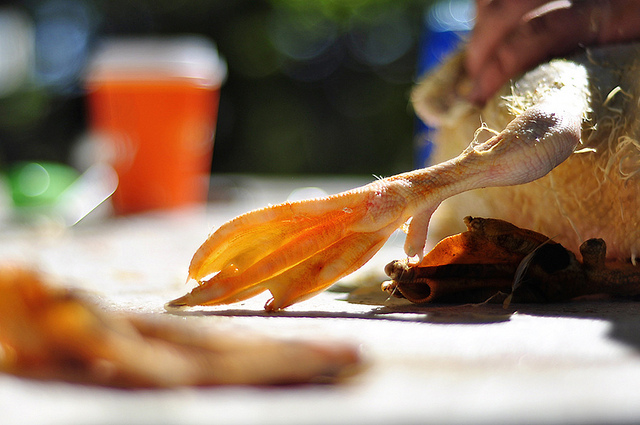How to Butcher a Duck at Home

Roast duck is one of the most delicious meals with a high nutrition value as well. However, before you can roast a duck, you will need to butcher it, especially when you raise ducks at home. This may also become necessary when there is an unavailability of duck meat in your vicinity. Butchering a duck at home is fairly simple but does require some practice. Furthermore, you would want to be careful not to hurt yourself while using the sharp knife.
Things Required:
– Sharp knife
– Two large pots
– Rope
Instructions
-
1
Use a piece of strong rope to immobilise the duck’s legs by tying them to each other. Hang the duck by the rope in such a way that its head is at your waist level.
-
2
Cut the duck’s jugular vein while holding its head. Use a sharp knife for this purpose. As the duck dies, it will thrash its wings for sure. For this reason, it would be wise to hold the duck’s neck down to prevent blood from spattering about.
-
3
Add water to a large pot, place over a lit stove and heat the water until its temperature is 140 to 150 degree Fahrenheit. Immerse the duck in the hot water and leave it as is for about a minute and a half.
-
4
Hang the duck as before and pluck its feathers. When all of the feathers have been removed, immerse the duck in a large pot of cold water to cool it down.
-
5
Cut the duck’s head, legs and neck. Use the knife to create and incision from the duck’s sternum all the way to the anus.
-
6
Get rid of the intestine in one whole bunch. Be careful not to slice or puncture the intestines in anyway. Cut the duck’s heart and lungs out.
-
7
Thoroughly wash the carcass and immerse it in cool water. Remove the duck’s liver and gizzard. Get rid of the sack from the gizzard. Be sure to dispose it off at a safe location.
-
8
At the base of the butchered duck’s tail, you will find an oil gland. Remove it with the sharp knife. Be sure not to pierce the oil gland.
-
9
Carefully dispose off of the internal parts of the duck such as gizzard, liver and heart.
-
10
Seal the butchered duck in a plastic bag. Be sure to remove as much air from the plastic bag as possible and finally store the duck in the freezer.


